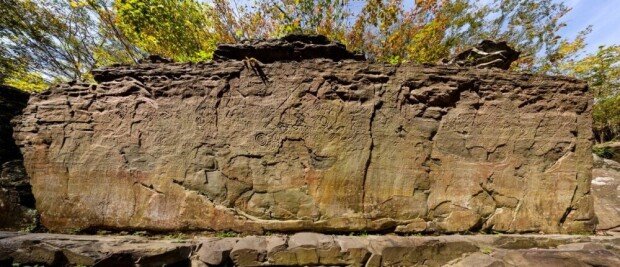Petroglyphs of Bangucheon seek UNESCO Heritage status
Petroglyphs of Bangucheon seek UNESCO Heritage status
Posted February. 01, 2024 07:56,
Updated February. 01, 2024 07:56

The Cultural Heritage Administration (CHA) announced on Wednesday that it applied to the International Center for Documentary Heritage to seek UNESCO Heritage status for the petroglyphs of Bangucheon in Ulju County, Ulsan, next year. This cultural record of prehistoric Korean ancestors generally refers to the country’s two national treasures - stones with letters and patterns engraved on them found in Cheonjeon-ri, Ulju and petroglyphs of Bangudae, Daegok-ri, Ulju.
The Cheonjeon-ri rock carvings excavated in 1970 feature not only geometrical patterns, deer, and therianthropic creatures but also the letters presumably carved during the era of King Beopheung of Silla, which makes it all the more important in the historical research of the 6th-century Silla Kingdom. The Bangudae petroglyphs describe how to hunt whales, as engraved on the rock plate, four meters long and 10 meters wide. As one of the country's oldest rock art pieces of prehistoric times, they provide a window into what life was like in the prehistoric era.
The CHA commended that the rock carvings of Bangucheon represent aesthetic expressions and cultural changes across the southeast coast of the Korean peninsula from the New Stone Age and the Silla era. If it makes it to the UNESCO Heritage list, it will become the 17th South Korean heritage, following the Gaya Tumuli, which gained the status last September.
There was a long debate over how to protect the Bangudae petroglyphs from being damaged by recurring inundations every monsoon season. A decision was only recently made to manage water levels by installing gates at Sayeon Dam.
4g1@donga.com
Headline News
- Joint investigation headquarters asks Yoon to appear at the investigation office
- KDIC colonel: Cable ties and hoods to control NEC staff were prepared
- Results of real estate development diverged by accessibility to Gangnam
- New budget proposal reflecting Trump’s demand rejected
- Son Heung-min scores winning corner kick







